The other week I wrote about Public Transport Victoria’s plans to make it easier for passengers to navigate through Flinders Street Station by making the wayfinding signage clearer to follow – but during my travels around Me;bourne’s rail network, I’ve spotted a different way to help passengers on their way – directional signage that adapts based on which paths are available.
I found my first example at Melbourne Central station, where arrows on a directional sign at concourse level can be turned on or off, depending on which direction the escalators are running in.
The reason for the sign – Melbourne Central has a number of escalators that don’t have a matching set alongside, meaning that they only operate in the ‘peak’ direction.
I then found a similar sign on the concourse at Flagstaff station, directing passengers down the escalators to platform level.
Again, the reason for the sign is the escalators – the direction of operation is changed in peak times to move passengers in the dominant direction, with passengers headed the other way only having on route to follow.
Finally, I found this illuminated ‘Degraves/Flinders Street Exit via subway’ sign at Flinders Street Station.
It directs passengers towards the ticket gates at the Campbell Arcade subway.
This exit sees little use outside peak hour, so is often closed late at night, hence the indication can be switched off to avoid sending passengers on a while goose chase.
Another Flinders Street Station footnote
Until a few years ago the Southbank and Elizabeth Street exits from Flinders Street Station were closed between 10pm at night and 6am in the morning – station signage pointing out the operating hours.
I wonder why the Degraves Street exit warranted an illuminated sign, but Southbank and Elizabeth Street had to settle for fixed times?
And on the subject of ticket gates
Myki ticket gates also have illuminated directional signs on them – green for open, red for closed.
As did the previous Metcard ticket gates.
However these indications aren’t very useful in peak times, when crowds of passengers block them from view.
A more useful solution is an additional set of open/closed indications located above the gates, such as this setup in Sydney.
The indications are also deceptive when the Myki gate develops a fault, displaying the ‘go’ indication on the approach, but the ticker reader isn’t active.
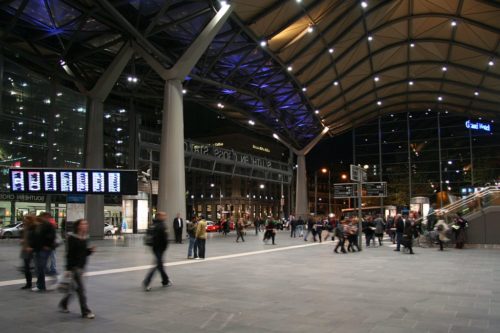
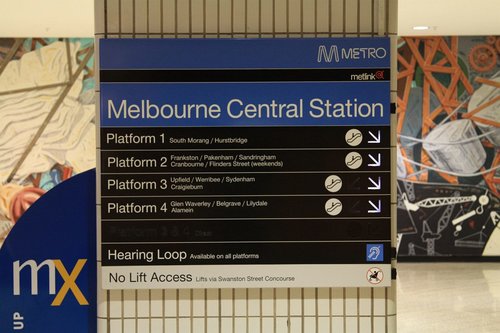
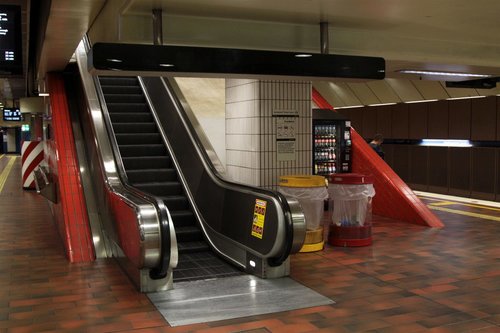
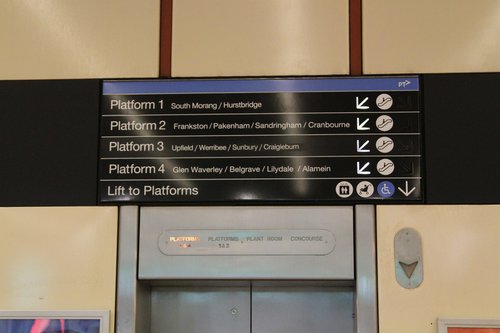
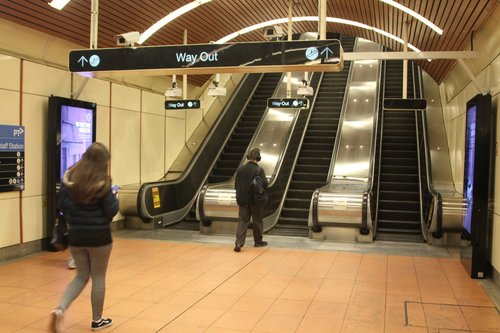
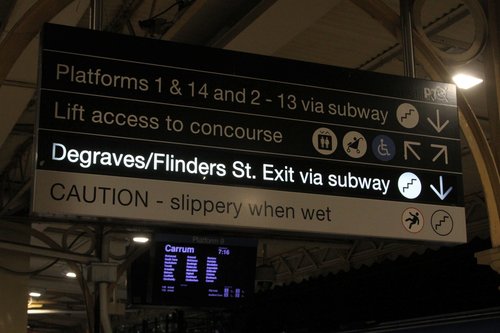
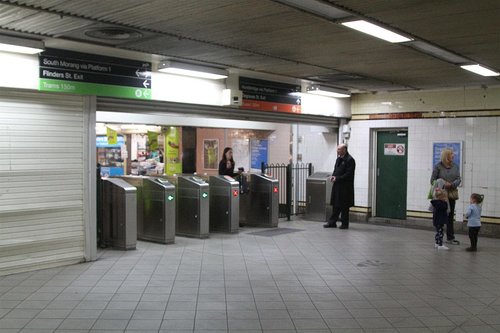
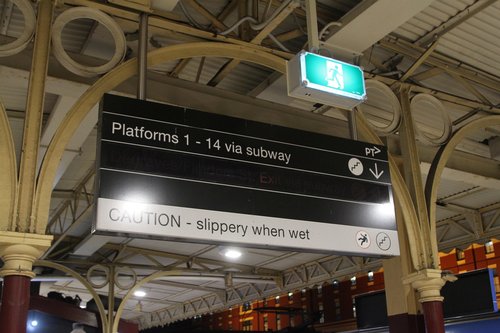
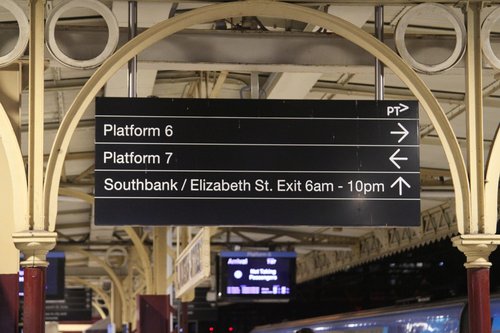
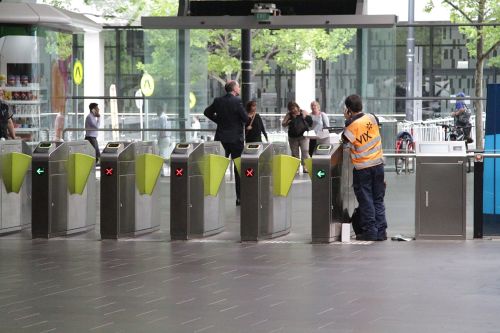
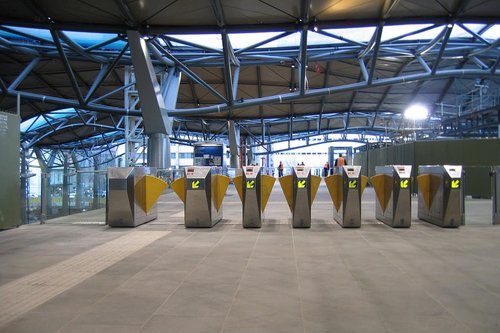
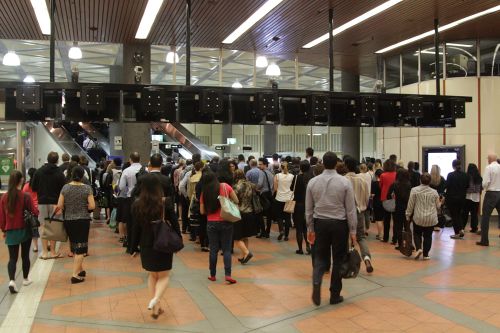
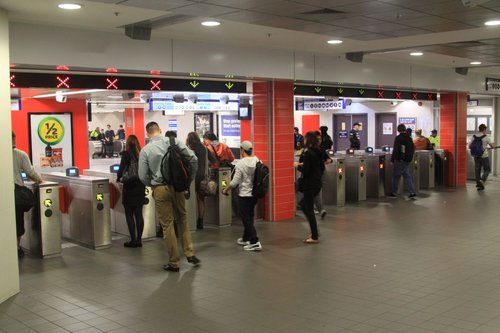

Dear Marcus,
Since at least 1920 nearly ALL Victorian Station metal signs and the majority of both 2 and 3 position semaphore signal blades (those not made in the US directly by General Railway & Signal equipment – a.k.a. G.R.S.) have been made of enamelled (baked) glass on metal pressings. These have ALL been manufactured by “Glass Metal Industries” at Moolap south east of Geelong on the Bellarine Peninsular.
Approximately 15 years ago, in order to save money, the then “Connex” had another company make the metal signs more cheaply and the surface was merely “screen-printed” with paint on the metal. These signs were first installed on the Alamein Line.
The results were totally disastrous with the first application of graffiti! As soon as the cleaning contractor applied graffiti remover to remove the vandalism, the station name screen-print came off! So Connex had to go back to Glass Metal Industries and have ALL the Alamein line station signage re-made and replaced!
I am now very reliably informed by one of my spies that either PTV or Metro is experimenting again with screen printed metal signs made at lower cost…..not by GMI.
One wonders how long it will take for the “penny to drop” again and PTV or Metro have to return to Glass Metal Industries at Moolap to have the inferior and non-vandal proof signage replaced yet again by proper baked (glass) enamel on metal signage?
Thought this might be of some interest?
Sean Kelly.
Thanks for that – I’ve also noticed that the current PTV signs are just coverplates glued over the original Metlink signs. 😛
Don’t forget the “sporting exits” at the Up end of Richmond for the Swan St subway. They had rotating signs for years, then onto the 2nd version of electronic ones now.
I’d forgotten about those – this 2005 photos shows the first LED version:
At Melbourne Central in the morning peak, the lone escalators usually operate in the downward (non-peak) direction, providing a way for passengers to get down to Platforms 1 and 2 while the paired escalators both run upwards.
I’m guessing the reason for this is that the solo escalators to platform 1 and 2 are tucked away behind the main escalators at platform level – so it makes sense to direct downward passengers to use them, as they are somewhat visible at concourse level.
The bonus is that passengers exiting trains in morning peak form a single queue for the paired escalators, which is more efficient that two separate queues.